서브메뉴
본문내용
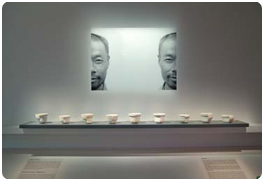
- A total of 1,430 artists from 67 countries submitted 2,475 entries to the 3rd International Competition.
Among them, 186 entries (69 from ‘Ceramics for Use’ and 129 from ‘Ceramics as Expression’) were selected.
Of these 186 works, 26 were awarded prizes through a rigorous final selection process.
The grand prize went to
'Human Bowl Face’by Phillippe Barde.
This exhibition illuminated current phase and bright future of international ceramic art, which has vigorously expanded in extremely varied ways since 1990.
Thirty world-renowned artists from different regions including Europe, the US, Asia, and Korea, who have expanded the boundary of ceramic arts by multifaceted methods, participated in this exhibition, providing an opportunity to study the tradition of ceramic art and experimentation, and context, and formality at the same time.

For the first time, the celadon of China and Korea, the two countries which had led the era of celadon in the history of ceramics, was displayed together to be compared.
Visitors to this exhibition could see all about celadon from scientifically analyzed documents on materials, glazes of celadon, and celadon masterpieces of the world, and have fun comparing celadon pieces of the two countries.
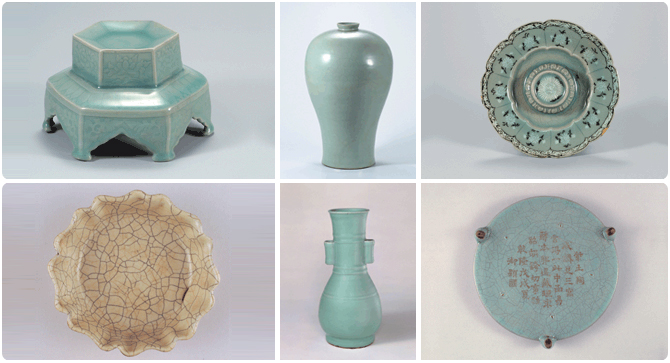
The main concept of this exhibition is nature, a leading global trend of design.
Under this concept, the whole exhibition space is created as a domestic environment, which is divided into lobby and living room, study and kitchen, bedroom and bathroom, and lounge.
Using environment-friendly materials in each space, ‘Ceramic House II’ showed new styles of a modern residence and demonstrated harmonious uses of ceramics in a domestic setting.

This exhibition included Materials Exhibition and Documentary Exhibition of World Ceramic Architecture.
It showed tiles and bricks, ceramic products, and other building materials for decoration produced by leading global companies. Documentary Exhibition featured classic examples of ceramic construction, historical photographs of architecture built with ceramic materials, and audio-visual documents.
Moreover, ceramics were used for the ‘Ceramics ResearchCenter,’ which opened in tandem with The 3rd CEBIKO to show practical uses of ceramics in construction.

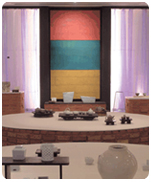
- This exhibition highlighted the aesthetics and characteristics of traditional Korean ceramics. It also focused on how traditional ceramic artists in modern times built on tradition.
Nature, the common element in traditional ceramic art, woodcraft, textile crafts, and painting, was fully used to show the harmony of artworks in the ceramic genre and artworks in different genre, allowing visitors to feel comfortable as if they were in nature.
This exhibition focused on the values and charms of ceramic souvenirs.
Included in the exhibition are products by global chinaware companies including Meisen, Herend, and Lladro, crafts designed by well-known art museums overseas, products with regional characteristics, and ceramic souvenirs that were selected through domestic competitions.

This exhibition looked at teapots as works of art and utilitarian vessels for daily use.
A wide range of teapots in various shapes and concepts from historical teapots of the East and the West to sculptural teapots created by the imaginations of contemporary ceramic artists with creative minds, and teapots by world-renowned names were all shown.

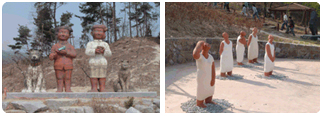
- This exhibition delved into the potential of outdoor ceramic sculpture as public art.
It was designed to show harmonious combination of ceramic sculpture and nature by creating a ceramic sculpture park in the outdoors of Icheon World Ceramic Center, where Mt. Seolbong and the lake are in perfect harmony.
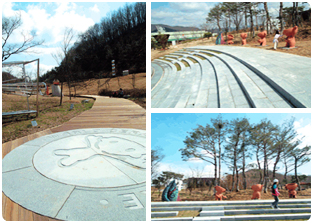
- A ceramic theme park was created along a promenade.
It delved into the potential of ceramics as newly emerging landscape architectural material. The exhibition presented a new world of ceramics in harmony with beautiful natural surroundings.
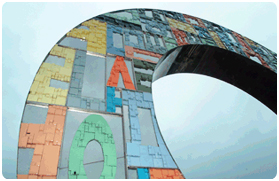
- Harmony between the environment and ceramic artworks was illuminated at this exhibition, which used Hangeul, the Korean alphabet, as the subject.
Ceramic sculpture decorated with designs of consonants and vowels of Hangeul, tree-shaped ceramic sculptures incised with consonants and vowels of Hanguel, and mascot sculpture with application of Hangeul characters were all in harmony, communicating to visitors interesting and educational messages.













 Gyeonggi Ceramics Biennale
Gyeonggi Ceramics Biennale

































